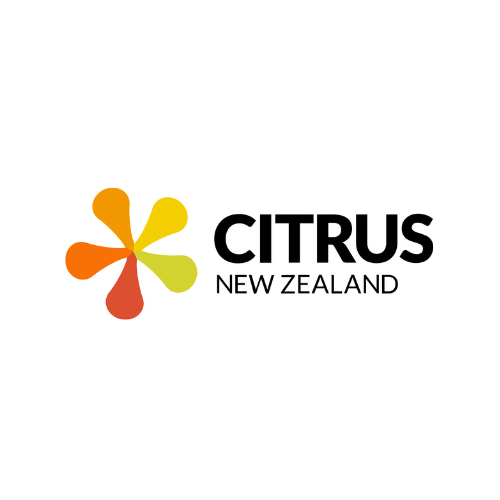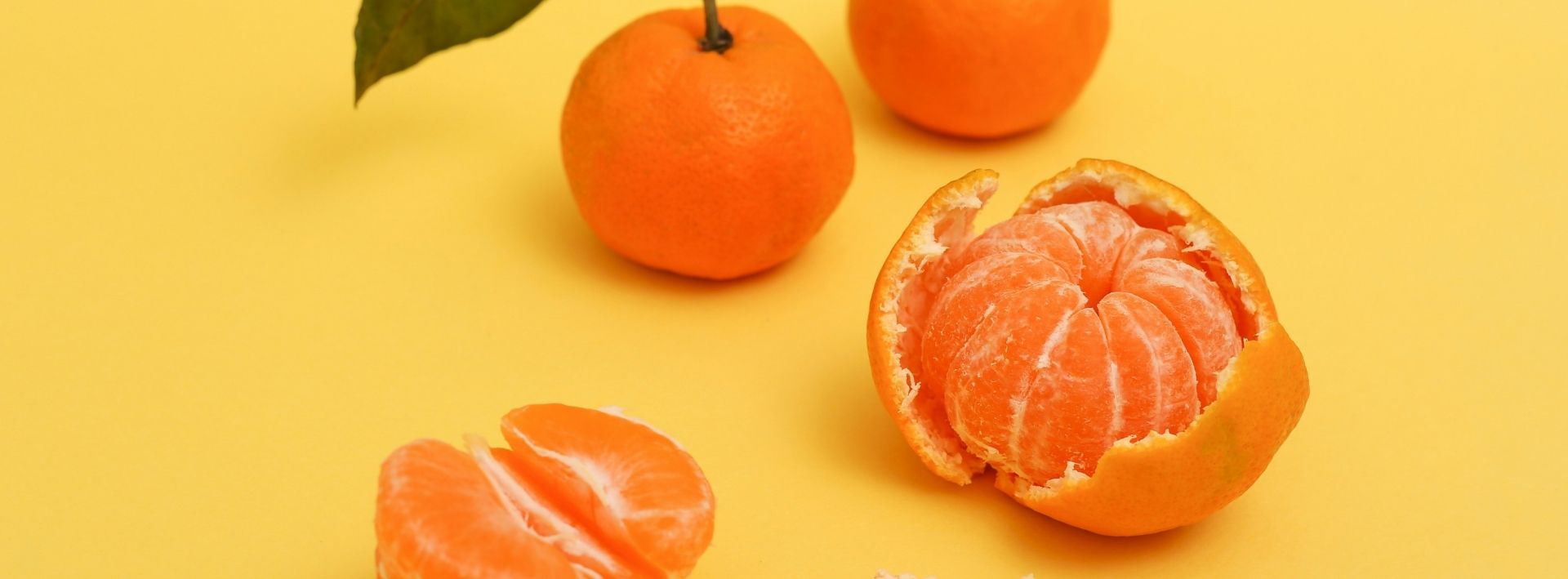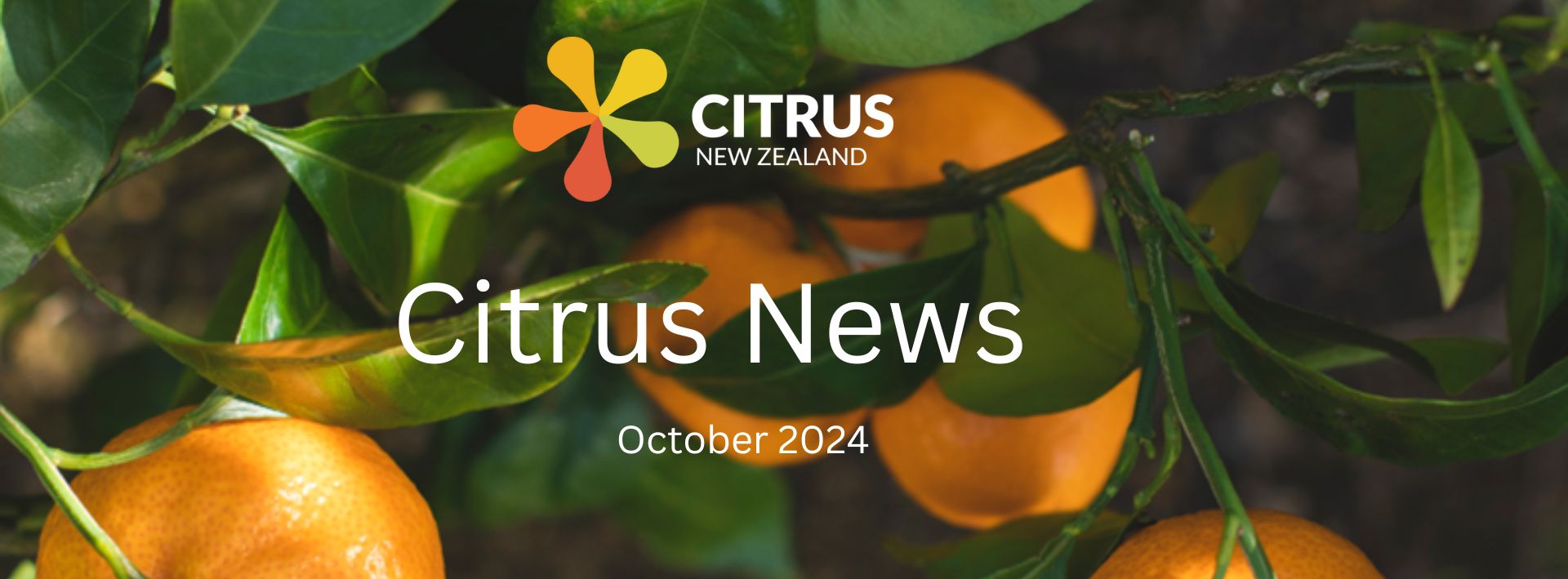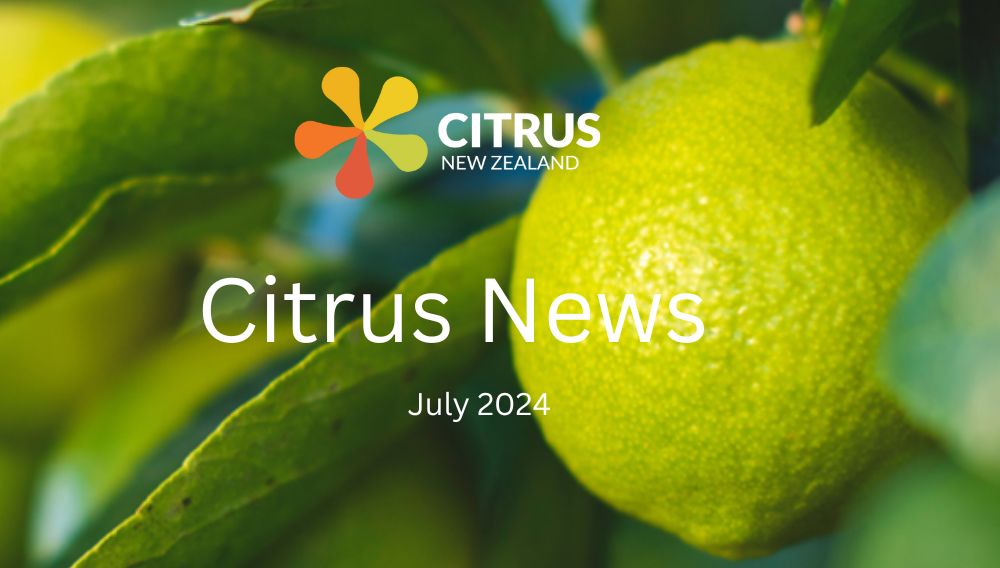From The Chair
Right now, it’s action stations across all citrus-growing regions of New Zealand with the 2025 season well underway. When the NZ Satsuma season began, virtually all USA mandarins had cleared the market. This provided a clean start for our new season fruit — a great example of how imported and domestic supply can successfully co-exist. More on that shortly.
Early fruit from Northland has been eating beautifully, with strong demand from NZ consumers. Even with two short trading weeks (due to Easter and ANZAC Day) and school holidays, demand has remained firm. Speaking of dampness, Northland has endured more than its fair share of wet weather since harvest began. Gisborne and Bay of Plenty growers will understand the strain this brings — rest assured, we know how you feel.
We’re now at the stage where both Northland and Gisborne are in full supply and where supply is starting to outpace demand. The only real lever the industry has in this situation is to increase consumption — encouraging consumers to buy more during their weekly or daily shop. This is typically done through price promotions, making fruit more affordable and appealing. Fortunately, citrus doesn’t face too much competition from other fruit at this time of year — mostly apples, kiwifruit, and some seasonal lines like feijoas and tamarillos.
The lemon market followed a similar pattern. USA lemons cleared quickly, creating a brief shortage before the new season Meyer crop was ready and prices lifted accordingly. Now that both Meyer and Yen Ben harvests are in full swing, supply has stabilised and local market prices have started to ease back. New Zealand lemons have a solid export market, which provides an additional outlet and balances domestic supply and demand volumes.
RETAIL ENGAGEMENT
Last month, I met with all major retailers for pre-season discussions — a good opportunity to reflect on their summer trading, talk through the 2025 winter outlook and drill into specifics around citrus. Key takeaways from those conversations included:
Satsumas are considered the most eagerly anticipated and sought-after NZ citrus product. This provides a great opportunity to build similar excitement for other NZ citrus lines.
Citrus is a core category. Retailers need mandarins, oranges, and lemons on shelves year-round. Very few fruit lines — especially domestically grown, hold that status. Imported staples include bananas, pineapples and grapes. Domestically, apples and kiwifruit fit the bill due to long storage capacity, though there are still supply gaps. Seasonal fruit like summerfruit are more accepted as ‘occasional’ — although I feel blueberries may be edging towards a ‘core’ fruit.
This trend is global – not unique to NZ.
Imports are essential to bridge supply gaps, particularly where NZ cannot provide year-round availability. For instance, no lemon imports occur during winter because NZ supply meets demand.
Imported fruit has a 6-week lead time, with orders already placed for arrivals in late June. These are pre-programmed, making it vital that NZ producers clearly communicate their seasonality and supply windows – especially where overlap exists, such as with navel oranges.
Retailers are aware of the challenges around grower sustainability, rising costs and compliance. While it might not always seem that way, they are sympathetic and committed to promoting NZ-grown produce where possible.
Retailers strongly support the navel orange maturity testing programme and the consistency that has brought into NZ navel orange supply. They are completely confident that NZ Navels will taste great and be consumer acceptable as soon as they hit the shelves.
No equivalent programme is seen as necessary for satsumas, with early Northland fruit considered as consistently eating well. Gisborne growers also strive to ensure their early fruit matches this quality.
INDUSTRY COLLABORATION
While on the road, I also attended the Horticulture Industry Forum (HIF) – a valuable gathering of product group representatives and HortNZ to discuss industry-wide issues. One highlight was a presentation from Tim Grossor and Tim Painter on tariff developments in the USA.
The following day, I attended the T&G-hosted Satsuma season launch breakfast in Auckland. It was great to see Northland growers, Auckland retail customers, and the wider industry being promoted with this start of the season launch.
I also attended a United Fresh industry meeting with presentations from 5+ A Day, Women in Hort, an AHAP update, GS1 (on 2D barcodes), and both major retail chains sharing insights on fresh produce trends.
MARKET ACCESS
Citrus NZ’s application for access to Taiwan for lemons, was not prioritised by MPI in its latest round. MPI uses a formal evaluation system, assessing the merits of each market access request against several criteria — with significant weighting given to national economic impact. While we understand the need for a prioritisation process, this weighting makes it difficult for citrus, being a smaller product group to compete, despite the significant regional impact a successful application could have.
That said, we do have positive momentum:
We are currently first in line for Meyer lemon access to South Korea and for all citrus to the Philippines.
The South Korea request is now in its 6/7th year, and the Philippines in its 3/4th year.
MPI has completed access protocols for commodities previously ahead of us, meaning effort can now be concentrated on citrus.
These markets will likely require on-orchard and post-harvest measures, such as standardised pest management programmes, orchard registrations, and approved post-harvest facilities. These measures are not unusual for the fruit product groups but are not yet part of NZ’s citrus access protocols. Citrus NZ will front-foot this – scoping a project, funded in this year’s budget, to prepare the necessary systems and documentation.
PMAC VISIT TO GISBORNE
This week, Gisborne hosted the Plant Market Access Council (PMAC) – made up of MPI, MFAT, and industry representatives. They hold four meetings annually, with one regionally based.
Seventeen participants spent a day visiting citrus and persimmon growers and toured Leaderbrand’s covered cropping facility. Feedback was extremely positive – one of the best field visits they’d had.
The following day, I presented on behalf of Citrus NZ. I highlighted:
Our industry’s size and export programmes
Challenges with the market access prioritisation system
The importance of maintaining current market access
The role of imports and the principle of reciprocity — if we allow certain imports into NZ, there should be a pathway for NZ products into those markets
Many smaller sectors like citrus, face similar hurdles, so it was valuable to share our perspective and build awareness. Citrus NZ is now represented on PMAC by Andy Warren (Bloomz), replacing Stephen Ogden (Market Access Solutionz). In the future, we may consider direct representation — but for now, our current export scale doesn’t quite warrant it.
Regards
Ian Albers, Chair Citrus NZ
In Depth: Remit Update
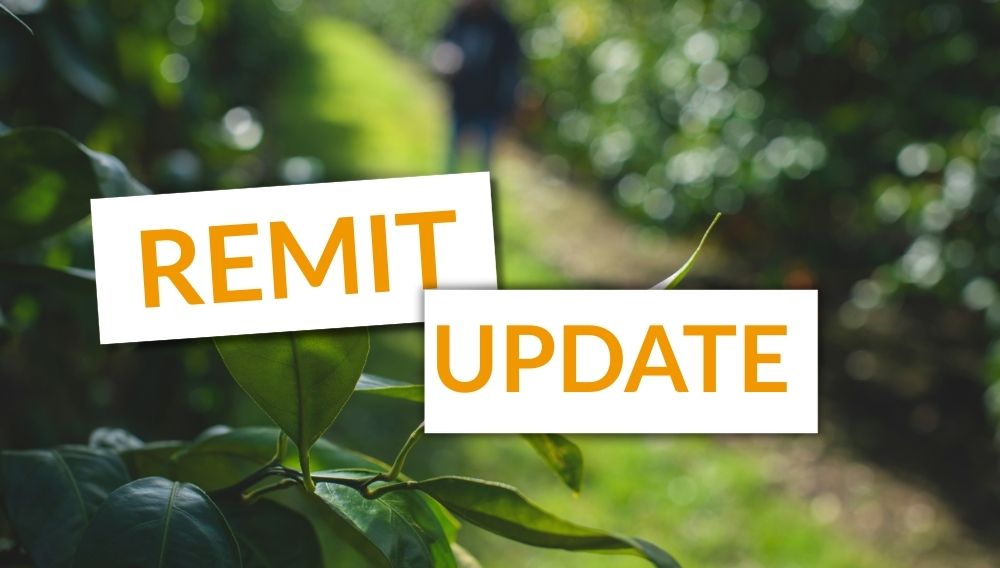
At the September 2024 AGM, members proposed exploring alternative business models to help improve grower profitability, particularly in response to current economic challenges.
A motion was passed for the Board to develop a Terms of Reference and investigate the cost of undertaking this review, with a recommendation to be brought back to growers within six months.
CitrusNZ has now developed a draft Terms of Reference and will present it to growers on Wednesday, 21 May, to gather initial feedback. A copy of the draft Terms of Reference have been emailed to grower members. Please contact if you have not received the email.
Please note that this is a consultation meeting. The board will provide an update of the work undertaken to date and will seek grower input on the draft Terms of Reference to help guide the next phase of the remit- developing a detailed costing.
DETAILS
Date: Wednesday, 21 May 2025
Time: 8:00- 9:00am
Teams Meeting Link: Join the meeting here
Meeting ID: 499 379 606 507 6
Passcode:Jo7Cr7nP
If you have specific questions ahead of the meeting, please email your questions to
RAG Meetings Kickoff with Regional Insights
Thank you to all growers who supported the formation of our Regional Advisory Groups (RAGs).
These committees held their first meeting this week, and the insights gathered will be further developed and presented at the SHED Talk meetings on 5 & 6 June.
RAGs have been established to bring a regional perspective to the challenges and opportunities facing our sector. They will help guide initiatives that benefit the wider citrus community. Topics raised in RAG meetings will help shape future SHED Talks, creating a valuable feedback loop between growers and the Citrus NZ Board.
We encourage growers to connect with their local RAG members ahead of meetings to raise any issues or ideas. Each RAG is chaired by a grower Board member to ensure your voice is heard and represented at the Board level.
Gisborne RAG Committee:
- Tam Jex-Blake (Chair) – Mangapoike Horticulture
- Bruce Jefferd – Papatahi Partnership
- Stephen Brownlie – Homegrown Juice
- Jason Galloway -Alchemy Gisborne
- Bruce Sutton
- Dave Hansen
Bay of Plenty/Waikato RAG Committee:
- Matt Carter (Chair) – Hill Road Orchard
- Rowan Wallace – Nga Puawai Orchard
- Amie Morgan – Morgan Organics Ltd
- Sandy Murphy – Alexandra Joy Citrus
Northland RAG Committee:
If we receive expressions of interest to form a Northland RAG, we will proceed with a Northland RAG as well. If you’re keen to be involved, please get in touch – email .
Governance and R&D Opportunities for Grower Members
Two Grower Board Member Vacancies – Call for Nominations
At this year’s AGM in September, two grower board member positions will be open for nomination. Jason Galloway (Alchemy Gisborne) and Ben Barker (T&G Fresh) will be stepping down, creating an opportunity for two new grower representatives to join the Citrus NZ Board.
We encourage interested grower members to put themselves forward. Under the Citrus NZ Constitution, board tenure is five years, with a maximum of 10 years through rotation.
To find out more, please contact .
Strengthening Our R&D Committee
The R&D Committee has confirmed a refreshed structure to strengthen governance and operational oversight.
Joe Lenaghan joins in a governance role representing the Board, while Matt Carter continues to support operational delivery. Sally Anderson remains as Chair, coordinating activity and reporting. The Committee will also include a grower advisor and an independent advisor, each appointed on a fixed two-year term aligned with the financial year.
Grower input is essential in shaping industry discussions — particularly around important issues like the loss of crop protection tools and pest management challenges. If you have ideas, concerns, or observations, we encourage you to share them with the Committee, please contact .
Expression of Interest – R&D Associate Role
The Citrus NZ Board recognises the importance of succession planning for the future of the organisation and has developed a voluntary position on the Research Committee for an R&D Associate. This position offers early-career professionals, the opportunity to gain hands-on experience in the research and development programme within the citrus industry and to contribute to Committee discussions and decision making. It aims to support the development of future industry leaders and ensure fresh perspectives are included in R&D decision-making.
The objective of this role is to:
- Develop an understanding of how the research and development programme supports the strategic goals of the NZ citrus industry
- Contribute fresh perspectives to discussions on citrus R&D projects and priorities
- Support the alignment of R&D projects with grower needs and industry challenges
- Build capability and confidence in participation on a committee.
This role is ideal for a recent graduate or horticulture professional with a curiosity for science, analytical skills, and a desire to learn more about R&D programmes.
You’ll work alongside the Citrus NZ R&D Committee, which includes the R&D Manager, grower and independent advisors and CNZ Board members. Meetings are held online every two months.
If you would like more information regarding this opportunity and how to apply, please contact .
Industry Updates
Commodity Levy Order Outcome
During 2024/25, Citrus NZ consulted with its members on the proposed Citrus Commodity Levy. While no changes to the existing levy rate were proposed, the current levy order is set to expire in February 2026. Growers were asked whether they support the introduction of a new levy order, which funds the core activities of Citrus NZ.
The referendum showed strong support across the sector:
85.33% voted Yes
14.67% voted No
Weighted vote (by kg): 69.28%
Voter turnout: 28.41% (75 votes from 264 eligible growers)
The levy application has since been submitted to the Minister, with a formal review scheduled for July. If approved, the Parliamentary Counsel Office will draft a new levy order, which is expected to go to Cabinet in November.
Following a 28-day public notification period in the New Zealand Gazette, the new levy is expected to come into effect in February 2026.
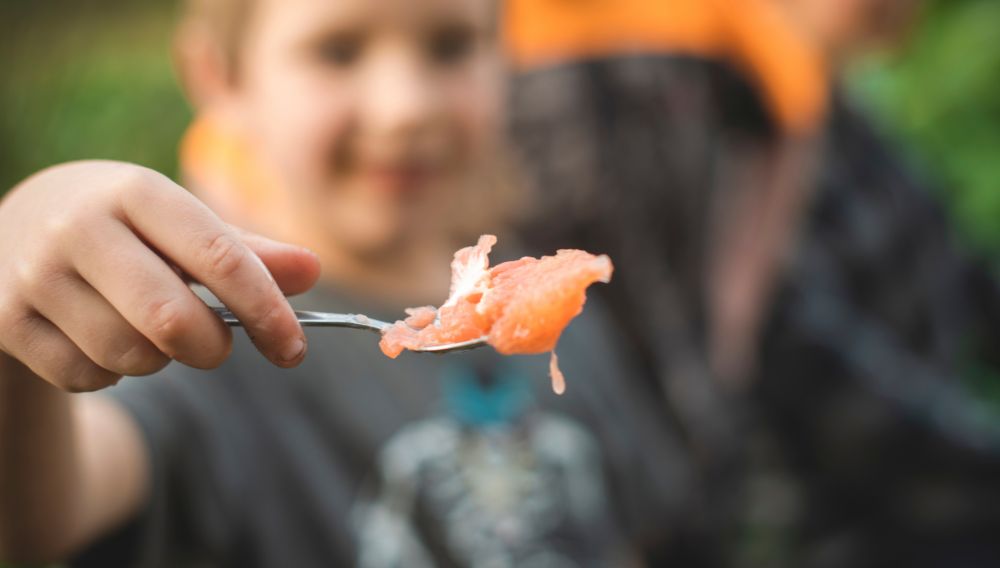
Research & Development
A Lighter Touch Programme
With just over two years remaining , the A Lighter Touch (ALT) programme is shifting its focus to grower adoption.
A key priority is sharing the tools, knowledge, and learnings from the programme to help growers overcome barriers to using biological crop protection products.
Alongside these activities ALT has projects underway that will help to improve the regulatory pathway for the approval of biological products in NZ. ALT has a project underway that is taking a new-to-New Zealand bioinsecticide through the regulatory pathway, with the goal of achieving registration of this product. The learnings from this project will be developed into a case-study to provide industry groups and crop protection companies with a roadmap for registering biological products in NZ. Alongside this work ALT is also reviewing international regulatory processes to identify solutions that could improve access to biological products in New Zealand. This work is being undertaken with the support of the New Zealand regulatory authorities.
Fruitfed Teams Get Hands-On with Citrus Training
In March, training sessions were held in Northland, Bay of Plenty and Gisborne to give Fruitfed Supplies horticultural staff a deeper understanding of the New Zealand citrus industry. The sessions covered citrus variety maturity timing, key nutritional requirements, common pests and diseases, and high-risk exotic threats such as Asian Citrus Psyllid and HLB.
Each training day included an indoor technical session, followed by a field walk through local orchards, giving teams a valuable opportunity to apply their learning in a practical setting. A big thank you to the growers who hosted these visits — including Kainui in Northland, and Russell Borman and Rowan Wallace in the Bay of Plenty.
Citrus NZ also extends its thanks to PGG Wrightsons and Elaine Gould for coordinating the sessions.
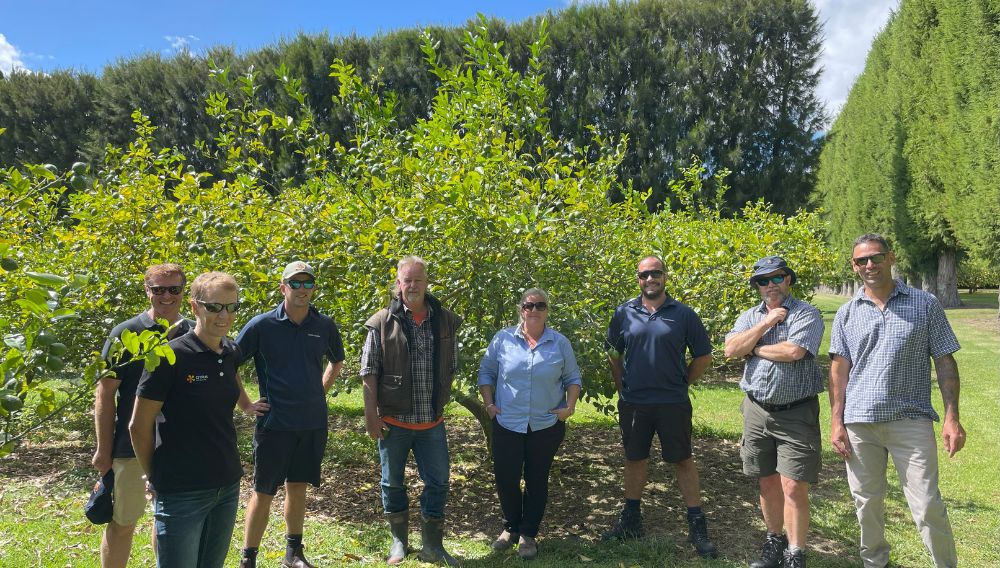
Lemon Supply Opportunity- TANING Lemon tea
TANING Lemon Tea is seeking to connect with a New Zealand lemon grower, as it establishes a national presence.
TANING Lemon tea is an international brand, with more than 1000 stores globally. With over 20 franchise stores planned across New Zealand in the next three years, the first store is scheduled to open in Auckland next week. The company is focused on building strong partnerships with growers who are open to collaboration and long-term opportunities.
TANING is committed to using locally sourced (preferably Meyer) lemons where possible. While initial demand will be moderate — estimated at 10–15 kg of lemons per store per day — this will scale up as more stores open.
As part of its launch, TANING plans to carry out a promotional photoshoot on the selected orchard to showcase New Zealand’s citrus industry and its local partnerships. This content will be featured across TANING’S official marketing channels — both in New Zealand and internationally — with grower brands and farm names highlighted to promote their role in the collaboration. They would welcome the opportunity to work with and meet the preferred lemon supplier early next month.
Growers interested in exploring this opportunity are encouraged to get in touch with Taning Lemon Tea at .
Grower Advice & Tips
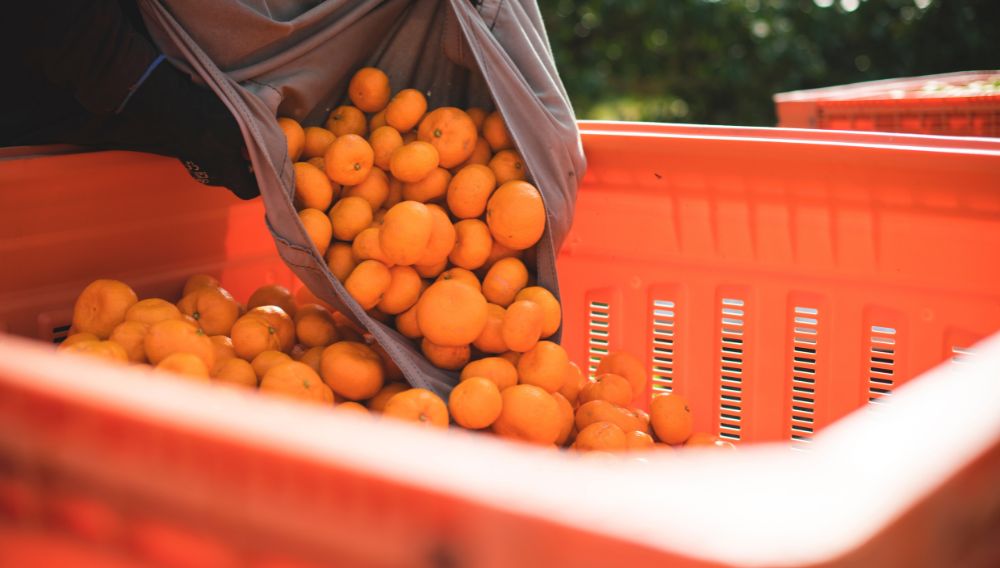
Getting Harvest Right: Maximise Returns with Smart Picking
As the new season kicks off for Satsuma mandarins and lemons, it’s a great time to revisit best-practice harvesting. Growers invest heavily throughout the season—through pruning, nutrition, thinning and crop protection—to produce high-quality fruit. After months of work in the orchard, harvesting is the last step and arguably can have the greatest impact on the financial return.
Harvesting is one of the costliest activities undertaken- a 50t/ha Meyer lemon crop can cost over $15,000/ha. Regardless of the quality picked, you still have a harvesting cost- quality counts!!
Key tips for a profitable pick:
Pick for Colour and Size
With early crops like Satsuma, Yen Ben and Meyer, colour and size are crucial. Select picking means just that—choosing fruit with the correct ripeness and size. Green or undersized fruit often ends up downgraded to lower-value grades (e.g. T2 or T3), even though the cost to pick it remains the same. Leaving it on the tree until the next round allows it to mature into a higher-value pick.
Minimise Clipper Damage
For fruit requiring clippers—such as Satsuma, lemon, tangelo, and grapefruit—proper technique is essential. Incorrect use can puncture or slice the rind, making the fruit vulnerable to rot and leading to rejection. Most clipper damaged fruit is rejected completely rather than being downgraded, leaving growers with negative value. Use curved or blunt-nosed snips and ensure pickers are trained and monitored.
Keep Stalks Flush
Long stalks can cause bruising and piercing in bins, downgrading otherwise high-quality fruit. All clipped fruit should be flush to avoid damage to surrounding fruit. Even snap-picked crops like navels can benefit from this attention to detail.
Use Proper Equipment
Pickers should use soft-sided bags or aprons, not buckets, crates or laundry baskets! These make it too easy to throw or drop fruit from heights, damaging delicate citrus like Satsumas or bruising lemons. Lemons in particular are often exported, so quality is paramount. Bags allow for gentle handling from tree to bin. Care should also be taken when emptying bags—lower them into the bin and tip gently.
Remember, harvest costs are fixed, but your crop’s value isn’t. Simple improvements in harvesting technique can reduce downgrades and increase your overall grower return. Ensuring good picker training and quality control pays off. You pay per bin or kg – regardless of quality. Good technique = better grades = higher OGR.
Resources Available:
Citrus NZ has developed updated harvest posters, pickers’ leaflets, and a field QC assessment sheet to help you monitor picker performance. These tools were among the first developed as part of the refreshed Growing Citrus in New Zealand Guide.
Download these from the Members Portal at www.citrus.co.nz, or email to request hard copies.
Upcoming Events

